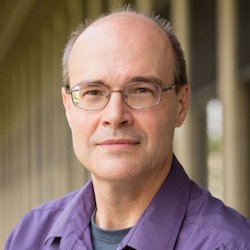March 06, 2017

Name: George Reese
LTEC Role: Senior staff
Professional Background: Professional Background: High School Mathematics Teacher at Santa Fe Public Schools and Santa Fe Indian School (SFIS) in Santa Fe, NM. I have a Ph.D in Curriculum and Instruction from the University of Illinois at Urbana Champaign. For the past 15 years, I have been the Director of the Office for Mathematics, Science, and Technology Education (MSTE). We were STEM before STEM was a thing.
Read the entire post...
February 27, 2017

In an effort to survey the landscape of programming environments suitable for early Computer Science learning, this week we turn our attention this week to Google’s Blockly. Blockly is a unique proposition in this space as it is not a full fledged programming environment but instead a library for building visual programming editors and applications. As Google states in the documentation, Blockly is for developers. Blockly apps are for students.
Read the entire post...
February 20, 2017

Name: Cheryl Moran
LTEC Role: Research Associate
Professional Background: I began my career as an elementary school teacher and taught for 8 years. I taught in both public and private schools. I have a bachelor’s degree in psychology from University of Illinois at Chicago and a master’s degree in teaching from National Louis University. I am endorsed to teach English as a second language. While teaching, I was a pilot teacher for Everyday Mathematics, 1st edition. I provided weekly feedback about lessons to the author team. I became intrigued with the Everyday Mathematics curriculum and wanted to share my experiences with other teachers so I independently began providing professional development to new and experienced Everyday Mathematics teachers. In 2003, I joined the UChicago STEM education (formerly CEMSE) team and have taken on a professional developer and curriculum writer role. Currently, in addition to this LTEC project, I am part of a researcher-practitioner partnership team exploring how to make high school computer science instruction and materials more accessible for students
with learning disabilities and attention deficit disorders.
Read the entire post...
February 09, 2017
Unplugged Lesson 8.2 from Stephanie Merkle on Vimeo.
The following is a story told by physicist, Richard Feynman as part of recounting his time at Los Alamos in the 1940s working on the first atomic bomb.
“Well, Mr. Frankel, who started this program, began to suffer from the computer disease that anybody who works with computers now knows about. It’s a very serious disease and it interferes completely with the work. The trouble with computers is you play with them. They are so wonderful. You have these switches - if it’s an even number you do this, if it’s an odd number you do that - and pretty soon you can do more and more elaborate things if you are clever enough, on one machine.
“After a while the whole system broke down. Frankel wasn’t paying any attention; he wasn’t supervising anybody. The system was going very, very slowly - while he was sitting in a room figuring out how to make one tabulator automatically print arc-tangent X, and then it would start and it would print columns and then bitsi, bitsi, bitsi, and calculate the arc-tangent automatically by integrating as it went along and make a whole table in one operation.
“Absolutely useless. We had tables of arc-tangents. But if you’ve ever worked with computers, you understand the disease - the delight in being able to see how much you can do. But he got the disease for the first time, the poor fellow who invented the thing.”
― Richard Feynman, Surely You’re Joking, Mr. Feynman!: Adventures of a Curious Character
Read the entire post...

